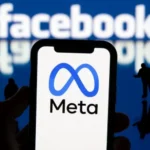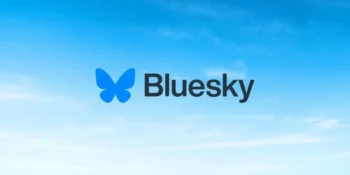YouTube has transformed from a simple video-sharing platform into a global cultural phenomenon that has fundamentally altered the landscape of media consumption and content creation. Since its launch in 2005, the platform has grown exponentially, influencing various aspects of society, from entertainment and marketing to education and social activism. This case study explores YouTube’s evolution, the rise of video content creation, its impact on creators and audiences, and the future challenges and opportunities it faces.
Background of YouTube
YouTube was founded in February 2005 by Chad Hurley, Steve Chen, and Jawed Karim, former employees of PayPal. The platform aimed to provide a user-friendly way for individuals to upload, share, and view videos online.
Early Days and Initial Growth
YouTube experienced rapid growth in its early days, primarily driven by user-generated content.
- Viral Videos: The platform gained popularity with viral videos, such as “Charlie Bit My Finger” and “Sneezing Baby Panda,” showcasing ordinary people’s potential to create content that resonated with audiences.
- Acquisition by Google: In November 2006, Google acquired YouTube for $1.65 billion in stock, recognizing its potential as a dominant force in the online video market. This acquisition gave the resources necessary to scale its infrastructure and improve its features.
Monetization and the Partner Program
The introduction of monetization options revolutionized the platform and incentivized content creation.
- Partner Program: Launched in 2007, the YouTube Partner Program allowed creators to monetize their content through advertisements. This program enabled many users to turn their passions into full-time careers, contributing to the platform’s growth.
- Ad Revenue: By sharing ad revenue with creators, YouTube incentivized high-quality content creation, leading to an influx of diverse content and channels. This shift marked the platform’s beginning as a viable career option for aspiring content creators.
The Rise of Video Content Creation
YouTube has become synonymous with video content creation, empowering millions of individuals to share their stories and connect with audiences worldwide.
The Democratization of Content Creation
YouTube’s user-friendly interface and accessibility have democratized content creation, allowing anyone with a camera and an internet connection to share their voice.
- Diverse Content: The platform hosts various content, ranging from vlogs and tutorials to music videos and educational content. This diversity has fostered niche communities and allowed creators to connect with like-minded individuals.
- Influencer Culture: The rise of influencers has been a significant outcome of YouTube’s evolution. Content creators with large followings have become influential figures in marketing and brand promotion, shaping trends and consumer behavior.
Empowering Marginalized Voices
YouTube has provided a platform for marginalized voices who may not have access to traditional media channels.
- Social Activism: Creators have used the platform to raise awareness about social issues, advocate for change, and share personal experiences. Movements such as Black Lives Matter and #MeToo gained traction on YouTube, highlighting the platform’s role in social activism.
- Representation and Inclusion: Content creators from diverse backgrounds have found opportunities to share their stories, contributing to a broader representation of cultures, identities, and experiences in media.
The Impact of YouTube on Society
YouTube’s influence extends beyond individual creators, reshaping how society consumes and interacts with media.
Changes in Media Consumption
The platform has altered how people consume media, with significant implications for traditional television and film industries.
- Shift to On-Demand Content: As audiences increasingly favor on-demand content, traditional broadcasters have had to adapt. YouTube’s instant access and user-generated content model have challenged the dominance of scheduled programming.
- Decline of Traditional Advertising: Advertisers have shifted their focus from traditional media to online platforms like YouTube, recognizing the potential to reach targeted audiences through video content. This transition has disrupted conventional advertising models.
Educational Resources and Learning
YouTube has become an essential resource for education and learning, offering vast information at users’ fingertips.
- Informal Learning: Many users turn to YouTube for informal learning, utilizing tutorials and how-to videos for various subjects, from cooking to coding. This trend has established the platform as a valuable educational tool.
- Formal Education Integration: Educators have begun integrating YouTube into formal education settings, using video content to supplement classroom learning and engage students. This integration has made learning more interactive and accessible.
Challenges Faced by YouTube
Despite its success, YouTube faces several challenges that impact creators, audiences, and the platform itself.
Content Moderation and Misinformation
YouTube, a platform that hosts vast amounts of user-generated content, grapples with content moderation and misinformation challenges.
- Hate Speech and Toxicity: YouTube has faced criticism for its handling of hate speech, harassment, and toxic behavior on the platform. Balancing free speech with the need to create a safe environment for users remains a complex challenge.
- Misinformation and Conspiracy Theories: YouTube has been criticized for spreading misinformation, particularly regarding health-related topics and political issues. The platform has implemented measures to address this, including partnerships with fact-checking organizations and content labeling.
Creator Monetization and Policy Changes
Changes to YouTube’s monetization policies have sparked frustration among creators.
- Adpocalypse: The “Adpocalypse,” which began in 2017, refers to a series of changes to YouTube’s advertising policies following controversies surrounding inappropriate content and advertiser backlash. These changes led to stricter monetization criteria, leaving many creators struggling to earn revenue.
- Demonetization: Many creators have faced sudden demonetization of their videos due to algorithmic content reviews. This unpredictability has raised concerns about the stability of income for content creators.
Competition from Other Platforms
YouTube faces increasing competition from other video-sharing platforms and social media networks.
- TikTok and Short-Form Content: The rise of platforms like TikTok has introduced a new wave of short-form content that attracts younger audiences. The platform has responded with features like YouTube Shorts, but competition for viewer attention remains fierce.
- Streaming Services: The growth of streaming services such as Netflix, Hulu, and Disney+ has shifted audience preferences toward long-form, curated content, challenging YouTube’s position as a primary entertainment source.
The Future of YouTube
As YouTube continues to evolve, its future will likely involve adapting to new trends and addressing existing challenges.
Innovations in Video Content
YouTube is continuously exploring innovations in video content to enhance user experiences.
- Live Streaming: The growth of live streaming has opened new avenues for content creators, enabling real-time interaction with audiences. YouTube has invested in improving its live streaming capabilities, making it an essential feature for creators.
- Virtual Reality (VR) and Augmented Reality (AR): YouTube explores integrating VR and AR technologies to create immersive experiences for viewers. This innovation could redefine how audiences engage with video content.
Community Building and Creator Support
YouTube recognizes the importance of fostering community among creators and audiences.
- Creator Support Programs: The platform has launched various programs to support creators, including the YouTube Creators Hub and partnerships with educational institutions. These initiatives aim to equip creators with the skills and resources needed to thrive.
- Community Features: YouTube enhances community features to encourage creator and audience interaction. This includes comments, live chats, and community posts, fostering a sense of belonging.
Regulatory Scrutiny and Compliance
As a central tech platform, YouTube faces increasing regulatory scrutiny regarding data privacy, content moderation, and advertising practices.
- Compliance with Regulations: YouTube must navigate complex regulatory environments in various countries, adapting its policies to comply with laws related to data protection and content moderation.
- Transparency Initiatives: YouTube focuses on transparency initiatives to build trust with users and regulators. This includes providing more precise information about content moderation processes and monetization criteria.
Conclusion
YouTube’s evolution from a simple video-sharing platform to a global powerhouse of content creation has profoundly impacted society, reshaping how media is consumed, created, and shared. The platform has empowered countless individuals to express themselves, connect with audiences, and build careers through video content. However, YouTube faces challenges related to content moderation, creator monetization, competition, and regulatory scrutiny. As it navigates these challenges, the platform must continue to innovate, support its community of creators, and address ethical concerns to maintain its position as a leader in the digital landscape.
YouTube’s future will likely be defined by its ability to adapt to changing audience preferences, embrace emerging technologies, and foster a safe and inclusive user environment. As it continues to evolve, YouTube will play a vital role in shaping the future of media, communication, and culture in an increasingly interconnected world.












